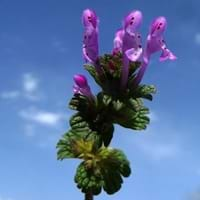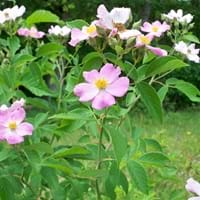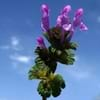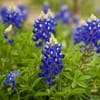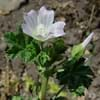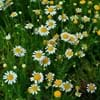Life Span
Annual
Perennial
Type
Herbs
Flowering Plants, Ornamental Plant, Perennial, Shrubs
Origin
Eastern Europe, Southern Europe, Mediterranean, Northern Africa, Central Asia, Western Asia
Canada, Eastern North America
Types
Not Available
Not Available
Habitat
Cultivated Beds
Wide range of ecological site
USDA Hardiness Zone
Not Available
Not Available
AHS Heat Zone
12 - 1
Not Available
Sunset Zone
Not Available
Not Available
Habit
Prostrate/Trailing
Clump-Forming
Flower Color
Hot Pink, Fuchsia, Violet
Baby Pink
Flower Color Modifier
Bicolor
Bicolor
Fruit Color
Not Available
Non Fruiting Plant
Leaf Color in Spring
Green, Purple, Gray Green
Dark Green
Leaf Color in Summer
Green, Purple, Gray Green
Dark Green
Leaf Color in Fall
Green, Purple, Gray Green
Dark Green
Leaf Color in Winter
Light Green
Light Green
Plant Season
Spring, Fall, Winter
Spring, Summer, Fall
Sunlight
Full Sun, Partial Sun, Partial shade, Full Shade
Full Sun, Partial Sun
Type of Soil
Clay, Loam, Sand
Loam, Sand
The pH of Soil
Acidic, Neutral, Alkaline
Acidic, Neutral
Soil Drainage
Average
Well drained
Bloom Time
Early Spring, Spring, Late Spring, Early Summer, Fall, Late Fall, Early Winter
Spring, Late Spring, Early Summer, Summer, Late Summer, Early Fall, Fall
Repeat Bloomer
Yes
Not Available
Tolerances
Not Available
Drought
Where to Plant?
Ground
Container, Ground, Pot
How to Plant?
Divison, From Rhizomes, Layering, Seedlings
Cuttings
Plant Maintenance
Low
Medium
Watering Requirements
Water occasionally
Average Water Needs
In Summer
Lots of watering
Lots of watering
In Spring
Moderate
Moderate
In Winter
Average Water
Average Water
Soil pH
Alkaline, Neutral, Slightly Acidic, Slightly Alkaline
Acidic, Neutral
Soil Drainage Capacity
Dry
Well drained
Sun Exposure
Full Sun, Partial shade
Full Sun, Partial Sun
Pruning
Remove damaged leaves, Remove dead branches, Remove dead leaves
Remove damaged leaves, Remove dead branches, Remove dead leaves
Fertilizers
Not Available
All-Purpose Liquid Fertilizer
Pests and Diseases
Not Available
Beetles, Black Spot, Caterpillars, Downy mildew, Mosaic viruses, Powdery mildew, Rust, Scale insects, Thripes
Plant Tolerance
Not Available
Drought
Flower Petal Number
Single
Double
Edible Fruit
No
Not Available
Fragrant Bark/Stem
Yes
No
Foliage Texture
Medium
Medium
Foliage Sheen
Matte
Glossy
Invasive
Yes
Not Available
Self-Sowing
Yes
Not Available
Attracts
Bees, pollinators
Birds, Butterflies
Allergy
Anti-inflammatory, Antimicrobial, Antioxidants, Flavonoids
Rash
Aesthetic Uses
Beautification, Cottage Garden, Showy Purposes
Showy Purposes
Beauty Benefits
Not Available
Not Available
Environmental Uses
Not Available
Air purification
Medicinal Uses
Antirheumatic, Diaphoretic, Febrifuge, Laxative
Not Available
Part of Plant Used
Flowers, Leaves, Stem
Flowers
Other Uses
Used As Food
Oil is used in perfume, soaps, creams, etc.
Used As Indoor Plant
No
Yes
Used As Outdoor Plant
Yes
Yes
Garden Design
Edible
Container, Cutflower, Feature Plant, Foundation, Mixed Border, Topiary / Bonsai / Espalier
Botanical Name
LAMIUM amplexicaule
Rosa carolina
Common Name
Henbit, Henbit Deadnettle
Carolina rose, pasture rose, low rose
In Hindi
henbit deadnettle
Carolina rose
In German
henbit deadnettle
Carolina stieg
In French
henbit deadnettle
Rosa carolina
In Spanish
deadnettle henbit
Carolina se levantó
In Greek
αυλακόχορτου deadnettle
Καρολίνα τριαντάφυλλο
In Portuguese
henbit deadnettle
Carolina Rosa ou Pasture Rose
In Polish
Henbit jasnota
Karolina róży
In Latin
henbit deadnettle
Carolina resurrexit
Phylum
Magnoliophyta
Magnoliophyta
Class
Magnoliopsida
Magnoliopsida
Family
Lamiaceae
Rosaceae
Clade
Angiosperms, Asterids, Eudicots
Not Available
Tribe
Not Available
Not Available
Subfamily
Not Available
Not Available
Number of Species
Not Available
Properties of Henbit Deadnettle and Carolina Rose
Wondering what are the properties of Henbit Deadnettle and Carolina Rose? We provide you with everything About Henbit Deadnettle and Carolina Rose. Henbit Deadnettle doesn't have thorns and Carolina Rose doesn't have thorns. Also Henbit Deadnettle does not have fragrant flowers. Henbit Deadnettle has allergic reactions like Anti-inflammatory, Antimicrobial, Antioxidants and Flavonoids and Carolina Rose has allergic reactions like Anti-inflammatory, Antimicrobial, Antioxidants and Flavonoids. Compare all the properties and characteristics of these two plants. Find out which of these plant can be used as indoor plant. If you are interested to decorate your house and garden, find out aesthetic uses, compare them and select the plant which will beautify your surrounding. Along with beautification, try comparing medicinal and edible uses of Henbit Deadnettle and Carolina Rose and you can choose the plant having best and most benefits.
Season and Care of Henbit Deadnettle and Carolina Rose
Season and care of Henbit Deadnettle and Carolina Rose is important to know. While considering everything about Henbit Deadnettle and Carolina Rose Care, growing season is an essential factor. Henbit Deadnettle season is Spring, Fall and Winter and Carolina Rose season is Spring, Fall and Winter. The type of soil for Henbit Deadnettle is Clay, Loam, Sand and for Carolina Rose is Loam, Sand while the PH of soil for Henbit Deadnettle is Acidic, Neutral, Alkaline and for Carolina Rose is Acidic, Neutral.
Henbit Deadnettle and Carolina Rose Physical Information
Henbit Deadnettle and Carolina Rose physical information is very important for comparison. Henbit Deadnettle height is 7.60 cm and width 30.50 cm whereas Carolina Rose height is 90.00 cm and width 60.00 cm. The color specification of Henbit Deadnettle and Carolina Rose are as follows:
Henbit Deadnettle flower color: Hot Pink, Fuchsia and Violet
Henbit Deadnettle leaf color: Green, Purple and Gray Green
Carolina Rose flower color: Baby Pink
- Carolina Rose leaf color: Dark Green
Care of Henbit Deadnettle and Carolina Rose
Care of Henbit Deadnettle and Carolina Rose include pruning, fertilizers, watering etc. Henbit Deadnettle pruning is done Remove damaged leaves, Remove dead branches and Remove dead leaves and Carolina Rose pruning is done Remove damaged leaves, Remove dead branches and Remove dead leaves. In summer Henbit Deadnettle needs Lots of watering and in winter, it needs Average Water. Whereas, in summer Carolina Rose needs Lots of watering and in winter, it needs Average Water.
